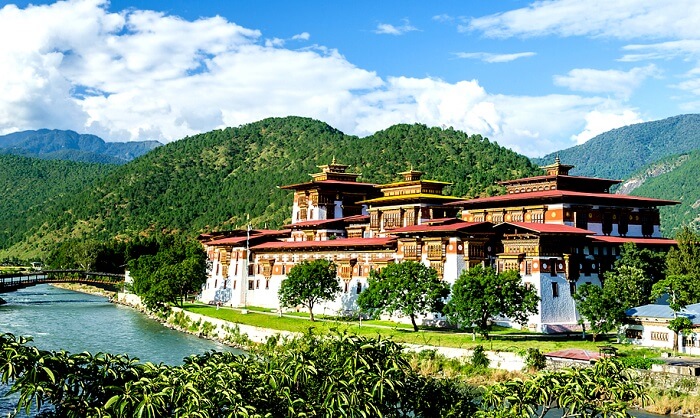Tourism in Bhutan
Tourism in Bhutan
Tourist places in Bhutan
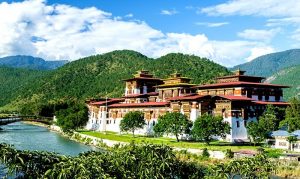
Tourism in Bhutan, Punakha Dzong, at the confluence of two rivers, was the venue of the Fifth King of Bhutans Royal Wedding.
In this tourist guide, we review the most famous tourist attractions in Bhutan, a country known as “the country of dragon and thunder”, the kingdom isolated among the fog of the Himalayas.
The Kingdom of Bhutan is a landlocked country in South Asia located at the eastern tip of the Himalayas.
The Kingdom of Bhutan (in Hindi: भूटान) is a landlocked country in South Asia located at the eastern end of the Himalayas. It is bordered on the south, east and west by the Republic of India, and to the north by the People’s Republic of China. Bhutan is separated from the neighboring state of Nepal in the west by the Indian state of Sikkim, while it is separated from Bangladesh in the south by the state of West Bengal. The Bhutanese call their country Druk Yol which means “Dragon Land”.
Bhutan is one of the world’s most isolated countries. The country’s urban areas have been modernized including direct international flights, internet, mobile networks, and television. Bhutan has balanced its ancient culture and traditions with a process of modernization under a guiding philosophy of the National Happiness Index. Environmental protection in the country a top priority. The government is taking great measures to preserve the traditional culture, identity and environment of the nation. In 2006, Business Week ranked Bhutan the happiest country in Asia and the eighth happiest country in the world, citing a global survey conducted by the University of Leicester in 2006 called the “World Happiness Map.”
Culture and history
There is rarely an aspect of culture in Bhutan that is not related to Buddhism or has not been influenced by it. With the exception of a number of cinemas not more than four, one newspaper in the country and other modern cultural landmarks with limited circulation.
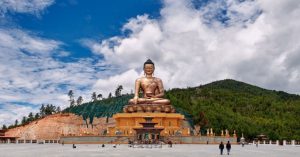
It highlights the impact of the environment and religious heritage in photography, decoration, trimmings, architecture, dance, music, and others. The technical skills of the residents are evident in the fields that express an overwhelming spiritual sense, especially in photography, decoration, carving on wood and bones, building façades of buildings and institutions and beautifying them. The local traditional character prevails over every building and dwelling.
However, the most prominent local architectural features are the monasteries, temples, and silos, and the materials used in all this are locally sourced and manufactured. Dance has a special place and expresses the depth of religious influences in movements, musical rhythm and dress, especially masks. The sport of bow throwing also occupies a special place. As for the literature and the other aspects associated with it, it is almost confined to a limited production and affected by the local and religious environment, and other literatures and their forms have not acquired a status that deserves to be mentioned.
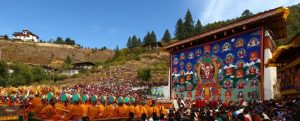
Tourist areas in Bhutan
Thimphu, the capital, Thimphu
It is perhaps the only capital in the world that does not have traffic lights, so residents prefer to dispense with it. Thimphu retains its own charm, as the facades of the buildings, with their elaborate and interwoven decorations, in harmony with the splendor of nature thrown in their lap, give the city visitor the feeling that he is living in the middle of the virtual world as portrayed by the myths of Buddha. It is no secret to the visitor to the city of Thimphu’s pride in its Bhutanese culture. On a plateau behind the city, TrashiChhoe Dzong emerges at its summit, which was restored in 1960 to be the beautiful face of the city that recalls the glories of history.
This castle housed the king’s offices and religious authority.
Paro
In the west of Bhutan is the most picturesque area, it is Paro that makes the kingdom different from all the traditional tourist destinations.
Located in the heart of the rich and fertile valley also called Paro, Paro is surrounded by picturesque countryside and unique and exotic villages that house the many ruins of ancient Bhutan.
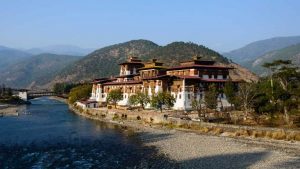
Bumthang
Bumtang includes the most important Buddhist sites in Bhutan, making it the spiritual place of the kingdom. The region combines four valleys, located in the Chosskor Dzung Valley, the most magnificent temples and palaces.
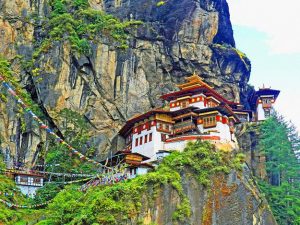
This is how the Far East holds a lot of beautiful mystery, and the Kingdom of Bhutan is one of its difficult-to-solve mysteries, and anyone who wants to live an adventure that the memory of days does not erase except to prepare to discover the endless secrets of the Himalayan magic.
